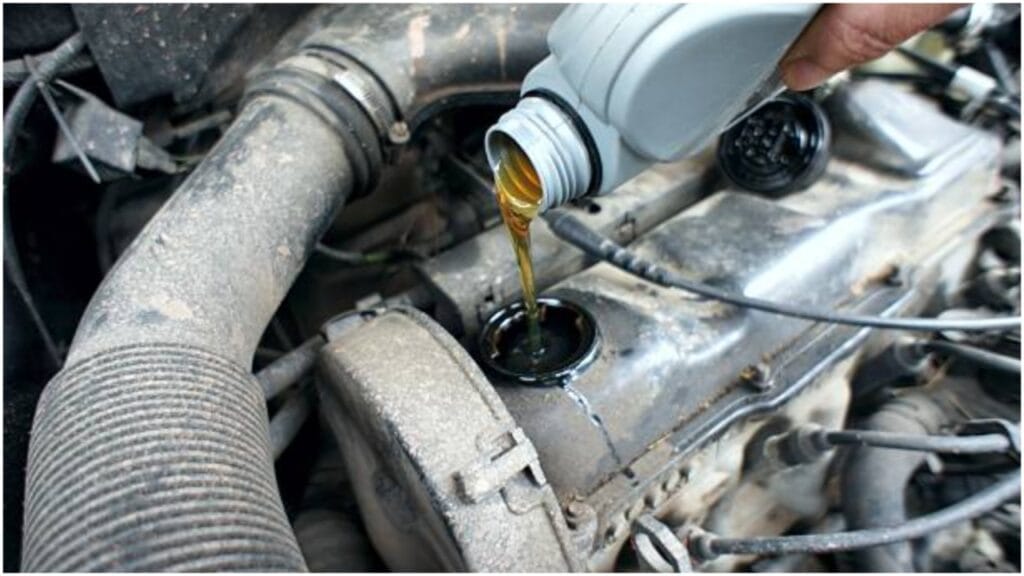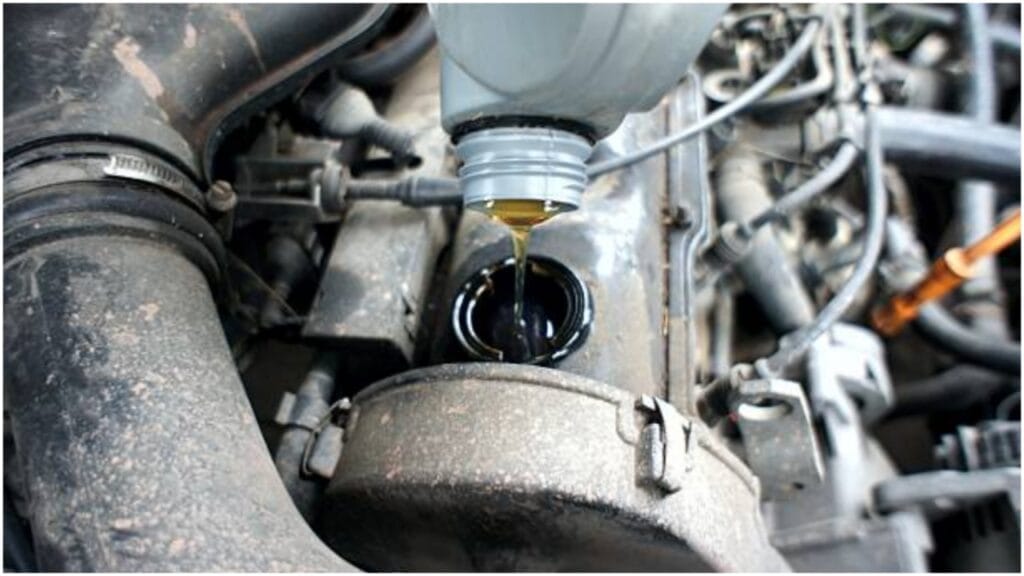Oil leaks can be a real headache, and I get why reaching for an oil stop leak bottle seems like an easy fix. I’ve tried it myself, hoping to save a few bucks and skip a trip to the mechanic. But before you pour anything into your engine, it’s worth knowing what happens inside. So, let’s dig into this a bit.
Oil stop leak products don’t fix broken seals—they just sort of “mask” the problem. The additives make seals swell temporarily or fill in tiny gaps. That might slow down a leak for a while, but it’s not a cure. The problem is, these additives can also thicken your oil or even mess with oil flow.
In some cases, they can speed up seal wear or clog up small oil passages. So, what seems like a cheap and quick fix can sometimes cause even bigger problems down the road.
If you stick around, we’ll talk about why leaks happen, the real risks of using stop leak, and smarter ways to handle those annoying drips without risking your engine.
Why Leaks Happen
Oil leaks can pop up for a bunch of reasons, and some of them are pretty sneaky. Like, I didn’t even know this at first, but there’s this little thing called the PCV valve that helps keep pressure in check inside the engine.
If that valve gets clogged or just stops doing its job, pressure builds up and oil starts finding ways out—usually through seals and gaskets. And it doesn’t even matter if those seals look fine. A bad PCV valve can cause leaks out of nowhere.
And don’t even get me started on oil filters. I used to think any cheap filter would do the trick, but nope. Some of those budget filters don’t seal right or fit as snug as they should.
That leaves tiny gaps where oil can slip through, making it look like you’ve got a big problem when it’s just a bad filter. Even one that’s just a little loose can cause leaks. So, making sure your filter’s good and tight is a quick way to stop leaks without getting your hands too dirty.
And then there’s old oil. Old oil turns into this thick, sludgy mess that clogs up passages and stops oil from flowing right. When oil gets stuck, pressure builds up in all the wrong places and forces oil past seals. So yeah, keeping up with oil changes isn’t just about clean oil—it’s also about keeping those seals from leaking in the first place.
The Risk of Ignoring Small Leaks
Those little oil spots on the driveway don’t seem like a big deal, right? I used to think the same thing. But here’s the thing—ignoring those small leaks can lead to some really big problems. Even just a little bit of oil loss adds up fast, and pretty soon, your engine’s running low on oil.
When that happens, the parts inside start rubbing against each other without enough oil to keep them moving smoothly. That’s when things start to wear out, and honestly, it can even lead to your engine seizing up or overheating.
And then there’s the mess. Oil dripping onto hot parts can burn and cause smoke, which is never a good sign. It could even cause a fire if you’re not careful. So, I’ve learned the hard way—fixing those small leaks early saves you a ton of trouble and money in the long run.
Additives Aren’t All the Same

I’ve learned that not all oil stop leak products are created equal. Some of them work okay, but others can cause more trouble. A lot of additives are meant to soften and swell seals, but if you pick the wrong one, it can make those seals swell too much, and that’s a problem. It’s like putting on a band-aid that’s too big—it might cover the problem, but it doesn’t fix it.
Some additives try to fill cracks, but they can clog parts of your engine where oil needs to flow freely. That’s something you don’t want. So, it’s super important to choose the right product.
Older Engines Need Extra Care
So, if you’ve got an older engine, you probably already know it needs a little extra love. I’ve noticed that as engines get older, parts like seals and gaskets wear down and get all brittle. That makes them leak more easily.
Now, if you try to use the wrong stop leak product on an older engine, things can go south fast. Some additives can make the seals swell too much, or even clog up the engine parts that need smooth oil flow.
From my experience, older engines just need more regular checkups and the right kind of products. Taking care of those little leaks early and using the right stuff can help your engine last longer without huge problems.
Ignoring Leaks Is a Wallet Trap
Ignoring oil leaks might seem like an easy way to avoid spending money, but in reality, it can end up costing you a lot more in the long run. I’ve learned this the hard way. When oil leaks go untreated, your engine runs the risk of losing too much oil, which means the engine parts won’t get the proper lubrication they need. This leads to overheating, increased friction, and major wear and tear on the engine.
What’s even worse is that by the time the leak becomes a bigger problem, the damage is already done. Fixing it early can be a simple repair, but ignoring it can lead to expensive repairs or even needing a full engine replacement. Regularly checking for leaks and addressing them right away helps save money and extends the life of your car.
Burning Smell Is a Warning

I’ve had that burning oil smell before, and let me tell you, it’s not something you want to ignore. If you smell that, it usually means oil is leaking onto hot parts of the engine, like the exhaust. It sounds small, but trust me, it’s a big deal.
When I first smelled it, I didn’t think much of it, but then I realized how serious it could be. If you leave it, the oil can keep leaking onto the hot parts, and it could cause smoke or even start a fire. And that’s not something you want to deal with.
Whenever I catch that smell now, I don’t wait around—I get it checked out right away. It’s your engine’s way of saying, “Hey, pay attention!” Fixing it early saves you from much bigger problems down the road.
FAQ’s
oil spot on driveway after oil change?
Seeing an oil spot right after an oil change can be a warning sign. Sometimes, it’s just leftover oil that dripped during the change. But if the spot keeps showing up or gets bigger, it might mean something’s loose—like the drain plug or oil filter—or that a gasket isn’t sealing right.
From my experience, it’s really important to check it out quickly. Ignoring it could lead to bigger leaks and even engine damage if oil levels drop too much. It’s always better to pop the hood and look for drips or go back to the shop to be sure everything’s tightened and sealed properly. Catching it early can save you from costly repairs and a messy driveway!
Does Lucas Oil Stop Leak Damage Engine?
So, I’ve looked into this a lot because, honestly, I was kinda worried about it too. From what I’ve seen and tried myself, Lucas Oil Stop Leak doesn’t hurt your engine—as long as you use it the right way.
It’s made to sort of soften and swell old seals to stop leaks, and it doesn’t have any of those harsh chemicals that could mess up engine parts. So, if your seals are just a bit worn out, it can help stop those annoying little drips without causing any harm.
If you pour in too much or try using it on seals that are, like, way too far gone, it might not work out so great. Making the oil thicker can mess with how it flows, especially when it’s super cold out. So, the key is to follow the instructions and not go overboard. If you’re not sure, it’s always a good idea to ask a mechanic first.
How Much Lucas Oil Stop Leak Should I Use?
So, besides just how much to use, there are a few other things I’ve picked up about Lucas Oil Stop Leak. First off, it’s super important to add it when you’re doing an oil change or at least when the engine’s cool. Pouring it into hot oil can mess with how well it mixes, and that’s not what you want. Also, make sure to pour it slowly so it blends evenly with the oil.
Another thing I’ve learned is that it’s not a magic fix. If your seals are completely shot, this stuff isn’t gonna work miracles. It’s really made for minor leaks or seals that are just starting to wear out. And if you don’t see any difference after a bit of driving, it might mean the leak is too serious for a stop leak product to handle. In that case, it’s probably time to get a mechanic to check it out.
Also, keep an eye on your oil levels after adding it. If the leak slows down, but the oil still seems to disappear fast, there might be a bigger problem. It’s kinda like putting a band-aid on a bigger wound—you need to make sure the actual issue is fixed. So, follow the instructions, keep an eye on things, and you’ll know pretty quick if it’s helping or if you need to take the next step.
Conclusion
So, honestly, after everything I’ve gone through with oil leaks, I can say they’re not something you want to ignore. Even the tiniest leak can turn into a huge, expensive problem if you just let it go. I’ve tried some of those oil stop leak products, and while a few helped a bit, you have to be careful about which one you use.
If you’ve got an older engine, it needs a little extra love. And that burning oil smell? Yeah, that’s a big red flag. From my experience, fixing small leaks early is just way smarter—and way cheaper—than dealing with a giant mess later. So, if you notice oil spots or that weird smell, don’t wait around. Get it checked out quick.

